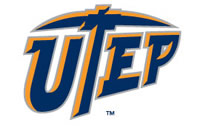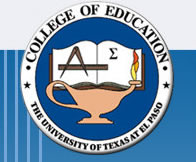
Bill Robertson, Ph.D. - Classes
Teacher Education Department
Physical Science Concepts
Motion
Motion - variety of quantities used to describe the physical world: distance, speed, velocity, acceleration, force, mass, momentum, energy, work, power
Work - force acting upon an object to cause displacement. W=f*d*cos0 f=force, d=displacement, 0=theta, angle of the vector.
Mechanical Energy - energy possessed by an object due to its motion or its stored energy of position. Can be both potential and kinetic. Measured in Joules.
Potential Energy - stored energy of position. PS=m*g*h, m=mass, g=gravitational constant (10m/s/s), h=height. Measured in Joules.
Kinetic Energy - energy of motion. KE=1/2*m*v2(squared), m=mass, v=speed
Power - work divided by time, measured in Watts.
Forces
Gravity vs. Lift and Drag (friction) vs. Thrust - most easily recognized in the way and airplane takes of in flight
Centripetal force - "Center Seeking", force required giving the centripetal acceleration that moves a body along a curved path. It is directed towards the center of a curve on a path. Only Centripetal is a "real force"
Centrifugal force - "To flee from the center", force felt by a body moving along a curved path, tendency of an object to go in a straight line.
Moment of Inertia - Magnitude of each element of mass by the square of the distance from the axis. In that sense, the closer the mass to the center (or axis), the greater the moment of inertia, and the farther the mass from the center (or axis), the less the moment of inertia.
Newton's Laws
Law of Inertia - An object at rest tends to stay at rest and an object in motion tends to stay in motion.
F = ma - Acceleration of an object is dependent upon 2 variables; the force on an object and the mass of the object.
Opposite and Equal Reaction - For every action there is an equal and opposite reaction
Simple Machines
A simple machine is one with few or no moving parts. Simple machines make work easier. A machine is a device that does work. machines do not increase the amount of work done, but they do make work easier. Machines make work easier by changing force or distance, or by changing the direction of the force.
Classic examples include the following:
- Inclined Plane - a sloping surface, such as a ramp
- Lever - a straight rod or board that pivots on a fulcrum
- Wheel and Axle - such as on a car or a skateboard
- Screw - an inclined plane wrapped around a shaft or cylinder
- Pulley - uses grooved wheels and a rope to raise, lower or move a load
- Wedge - used to push two objects apart and is made up of two inclined planes
There are three truly simple machines - the lever, the pulley and the inclined plane. The wheel and axle, the wedge and the screw are modifications of the other three simple machines. A complex machine is made up of two or more simple machines.

Bill Robertson, Ph.D. (robertson@utep.edu)
Teacher Education Department, College of Education, University of Texas at El Paso